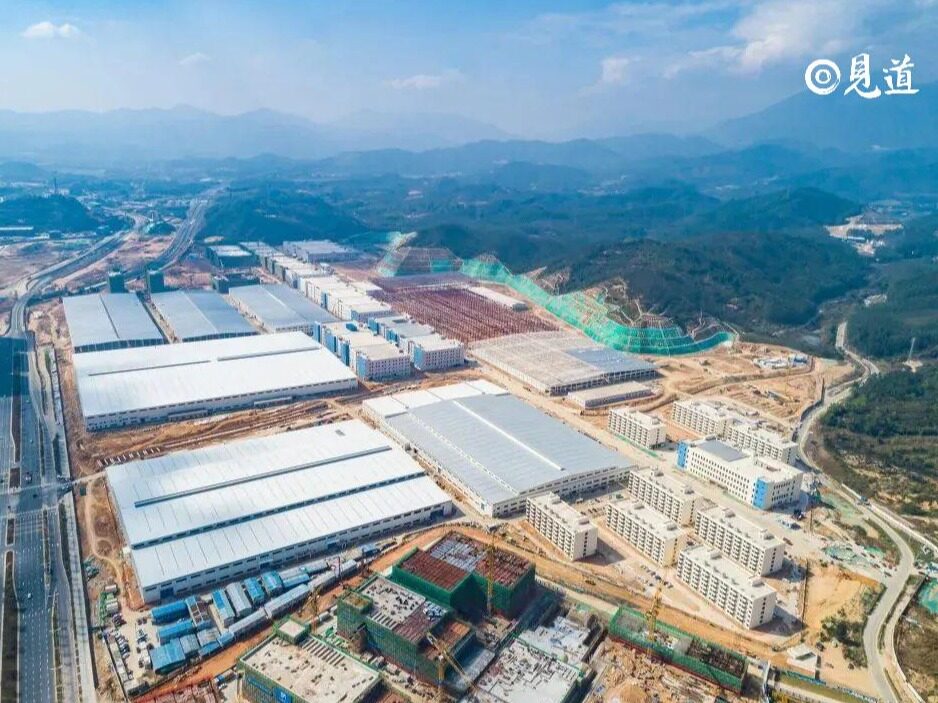- Fossil fuels are still a major part of the UK energy network, but wind electrolysis technology can become more environmentally friendly

Although wind power continues to grow and develop, fossil fuels, especially natural gas, are still an important part of the energy structure of the UK and most of Europe. Fortunately, however, wind energy pushes the latter into the future by providing the energy needed to make synthetic hydrogen. Greg Noone talked with SGN Energy Futures Director Angus McIntosh and NREL Senior Engineer Kevin Harrison to learn more about the potential of wind electrolysis.
The winter in Leavenmouth is very cold. Located in Forth Bay between Edinburgh and Dundee, the temperature will drop to 1°C in winter, although the strong westerly winds sweeping through the town from the North Sea will offset this temperature from time to time. In this weather, it is recommended to wear a few more clothes: most people wear pullovers, woolen caps and thermal underwear for adventurous residents. Reliable central heating is also essential. From early autumn to the warmth of spring, the boiler rumbling in Levenmouth has been heating up the radiators and shower rooms in this Scottish town for the past 50 years-all the burning gas is deep underground. It is transported by pipeline.
A large number of ancient animal and plant materials are crushed by the huge pressure in the earth's crust. Natural gas produces carbon dioxide when burned for power generation or heating; a small but effective human contribution to the warming of the earth's atmosphere. For the residents of Levinmouth, this seems to be a multifaceted problem: after all, there are more obvious climate destroyers that come to mind than those who crave a hot bath in the cold Scottish winter. . However, it is this community that will become a test bed for sustainable alternatives to natural gas — a single wind turbine that owes its existence to a single wind turbine located only 5 miles from the coast.
If all goes according to plan, the H100 Fife facility built by the Scottish energy company SGN will use so-called "green hydrogen" to power hundreds of homes in Levenmouth. Unlike natural gas, burning hydrogen does not produce carbon dioxide.
More importantly, this most basic gas can be obtained directly from water through a process called electrolysis, which uses an electric current to separate two hydrogen atoms in a liquid molecule from one oxygen atom. Admittedly, this method is energy-intensive, but SGN hopes that by using electricity from wind turbines owned by nearby British offshore renewable energy catapults, they can obtain enough electricity to run the electrolyzer indefinitely.
SGN Energy Futures Director Angus McIntosh explained: "Our project is from the tip of the turbine to the combustor. There are great opportunities to develop local resources, especially near the coast of Scotland, where there is a very good load factor and enough space for offshore wind power construction. ."
As part of the British government's Gas Goes Green program, H100 Fife aims to prove the feasibility of using green hydrogen to decarbonize the country's heating system. The platform for doing this may be small. The first phase of the project has 300 households in Levenmouth, and the second phase has 1,000. Once it succeeds, it can provide a successful template to green the entire national natural gas network. The UK will realize it by 2050. Its net zero carbon emission target. However, in fact, the residents of Levinmouth will participate in an experiment whose impact is far more than simple green boilers—according to a model, large-scale production of green hydrogen can not only produce enough fuel, but not only Decarbonization of heating, energy storage and transportation can also enter into bargaining.
Wind energy electrolysis hydrogen
In theory, hydrogen is the perfect fuel. It is so named because the main by-product of its combustion is water ("hydro" in Greek means water, "gen" means gene, or "born-of"), and science first noticed its power generation potential in 1801. At the time, British scientist Humphry Davy invented the fuel cell, which generates electricity through a chemical reaction between oxygen and hydrogen.
Five years later, French engineer François Isaac de Rivaz (François Isaac de Rivaz) built a basic internal combustion engine powered by a hydrogen-oxygen mixed fuel source. However, for more than a century after that, the practical application of hydrogen remained largely theoretical, except for its use in airships as a lighter gas than air—this fashion soon followed in 1937. The end of the spectacular explosion of the Hindenburg in 1988. Only in the space race between the United States and the Soviet Union, the majesty of hydrogen as a fuel material was known. This element was the main component of the liquid fuel rocket engine at that time.
Almost none of the hydrogen produced is "green" at this time. More than 95% of the gas continues to be captured from coal or natural gas to produce so-called "gray hydrogen," according to the International Energy Administration, this process releases 830 million tons of carbon dioxide into the atmosphere each year. At the same time, with the exception of scientific demonstrations in middle schools, electrolysis has hardly been practiced. Kevin Harrison said the reason is that the cost of electricity required to produce hydrogen on a large scale using this method is too high.
"The cost of electricity must be low," explained a senior engineer at the National Renewable Energy Laboratory (NREL) based in Golden, Colorado. A recent study published in the "Energy" magazine found that the cost efficiency of using solar energy to produce green hydrogen is six times lower than traditional methods. Obviously, any future hydrogen economy must be cheap and enjoyable. "If you want to produce green hydrogen competitively, that is your primary goal." Harrison said.
Even if we are not fully at that stage, the stars seem to be aligning for an affordable green hydrogen production base. On the one hand, the manufacturing costs of turbines have fallen sharply in recent years, stimulating demand for new wind farms in Europe and North America. According to the forecast of the US Department of Energy, due to ongoing research work by institutions including NREL, the efficiency of electrolyzers continues to increase, and the cost of operating them is expected to drop by 75% in the next ten years.
In turn, this coincides with the rapid increase in public demand for renewable energy and the gradual decarbonization of the world economy. Harrison said: "I am working with a few natural gas utility companies that want to decarbonize the natural gas pipeline network. This desire does not just stem from a sense of civic responsibility for the environment."
Construction facility
Many companies have already begun to act. In August 2020, Siemens Energy and China Power International announced a cooperation to build a green hydrogen energy facility driven by wind turbines in Inner Mongolia. At the same time, in Australia, the Asian Renewable Energy Center proposed to invest 50 billion Australian dollars to build 26GW of wind and solar power generation facilities to power a green hydrogen export plant in Pilbara, Western Australia. This problem even appeared during the US presidential election, when President Joe Biden promised to launch a green hydrogen research program on his Democratic platform.
Most green hydrogen facilities are still in the design stage or are too small in scale to make a meaningful contribution to global gas production (only 5% of them are manufactured through electrolysis, mainly as a by-product of chlorine production). It is true that when it is put into production and operation in the winter of 2022, the H100 Fife will fall into the latter category. However, its template is a template that can be easily copied by energy companies up and down the British coastline. According to a June 2020 study by the London-based Policy Research Center, the country is "lucky" to have ideal conditions for large-scale production of green hydrogen.
“There are few other countries that can rely on a location like the North Sea, where not only is the wind very strong, but also relatively shallow.” The report continued, “This makes it easy to install turbines, which will eventually produce a place to electrolyze water into useful hydrogen. The electricity needed."
Of course, if the customer does not accept green hydrogen, it is meaningless. Therefore, all families participating in H100 Fife are voluntary. "You want to make sure this is an opportunity to opt-in, and those who opt-in will not be disadvantaged in any way," McIntosh explained. Much of the effort has been focused on convincing customers that green hydrogen is functionally equivalent to natural gas. SGN intends to prove this by building a demonstration house in Levenmouth with a working hydrogen-powered boiler and necessary showers, heaters and ovens. .
Those families participating in the H100 Fife will give SGN an in-depth understanding of the potential operation of the green hydrogen network. "The project will have more than 115 results," Mackintosh said, "from the way the auxiliary supply equipment works to the reliability of the new network gas detection equipment. Whether it is from the success of the project or the appetite of the customer and the customer's preference for it From the perspective of acceptance, whether it meets their needs or not, it will provide important insights into hydrogen as an option for thermal decarbonization."
The potential use of green hydrogen does not stop at the green energy network. If the prices of wind and solar energy continue to decline over the next decade and the efficiency of the electrolyzer increases, there is reason to believe that natural gas can play a key role in decarbonizing other parts of the energy mix. According to Harrison, the increasing use of hydrogen fuel cells in material handling vehicles indicates that gas has a broader role in transportation. "Companies like Plug Power and others have found an economical and competitive market by using hydrogen fuel cells to power forklifts instead of their all-battery propane solutions." After that, the next market for green hydrogen It is likely to be a light car. "You can now see UPS trucks and garbage trucks moving around using natural gas or compressed CNG," Harrison said. "That might be hydrogen."
This may require more investment
What remains to be seen is the price that all of this may have to pay. According to the International Renewable Energy Agency, to fully meet the hydrogen demand for energy storage, transportation and heating, it will need to produce up to 158.3 million tons of natural gas each year. The energy news website Recharge calculated that wind farms worth 1,775GW are needed for production. Provide motivation. Although the world currently produces about 120 million tons of gray hydrogen each year, the total wind energy capacity is only 564GW.
Even so, it is difficult to imagine that green hydrogen will be excluded from any global transition to renewable energy. This partly stems from its advantages as a storage medium. Hydrogen fuel cells are very suitable for storing electricity on rainy days, which is crucial if the grid relies on fluctuating power sources such as solar or wind energy. More importantly, in contrast to batteries that need to be manufactured, by purchasing more storage tanks, the capacity can be increased relatively cheaply.
Therefore, it seems more realistic to think that green hydrogen is not a panacea for climate emergencies, but just one of the many weapons we use in the fight to reduce carbon emissions. Harrison is very familiar with this battle. He spent most of his youth fighting in the US court system with the aim of installing wind turbines in his backyard to counter local backyard opposition. Today, he is busy training the next generation of renewable energy engineers at NREL.
Keywords: new energy, foreign engineering project information
"In my opinion, we don't have much time to wait 50 years to find a panacea that can solve all our problems," Harrison said. "It is a sense of urgency to train these young people into engineers and scientists so that they can deploy the things we have in the laboratory tomorrow."Editor/Baohongying
Comment
 Praise
Praise
 Collect
Collect
 Comment
Comment
 Search
Search














Write something~